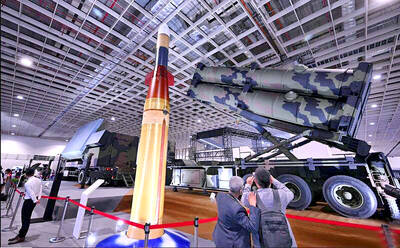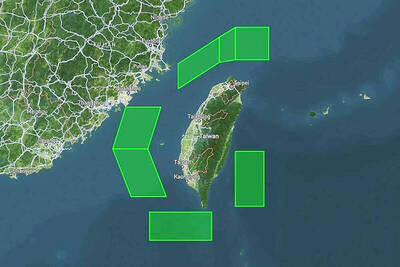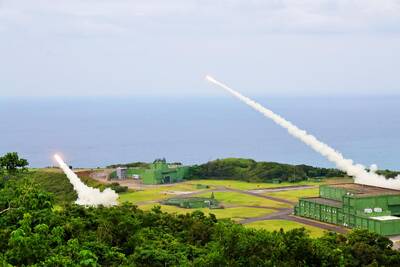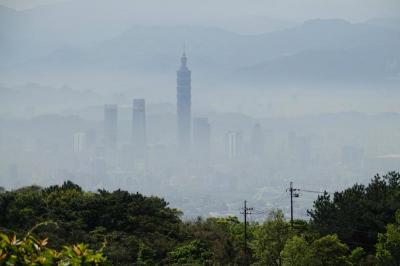Six books about the history of Kinmen County were released on Tuesday, as part of the county government’s efforts to promote the island as “a place of stories.”
It has long been the county’s goal to share its 1,700-year history with the public, Kinmen Cultural Affairs Bureau Director-Genreal Lu Kun-ho (呂坤和) said at the book launch.
It is hoped that Kinmen will become a place of stories, warmth and emotion that would appeal to people, he added.
Although Kinmen is a small island, it has 170 villages with diverse cultures and kinship systems worth documenting, Lu said, adding that the six-volume series, commissioned by the county government, is just the beginning, with more books expected.
The books tell stories from people living in Shanglin (上林), Houpu (后浦), Houshueitou (后水頭), Cingyu (青嶼), Guningtou (古寧頭) and Cyonglin (瓊林) townships.
The writers, who were selected through a year-long process, talked about how they approached the project.
Lin Ma-teng (林馬騰), author of the book about Shanglin, said he interviewed senior residents and tried to faithfully portray their descriptions of life in the village, telling “the big story of a small town.”
Kinmen — 2.3km off the coast of China — was the frontline during the Taiwan Strait crises in the 1950s.
During the Cold War, Kinmen was seen as the closest outpost of the democratic world to a communist regime.
From its battlefields, to its tunnels and museums, the island bears the scars of its history, which the local government has been promoting as a tourist attraction.
In related news, Premier Lin Chuan (林全) on Tuesday last week said that Kinmen and Matsu, two major battlefields during the Chinese Civil War, are now facing different challenges.
A good public transportation system and a robust healthcare system are particularly needed in regions, Lin said, adding that more should be done to meet residents basic needs.
He made the remarks at the inauguration of the Executive Yuan’s Kinmen-Matsu Joint Service Center in Kinmen.
He also said that center staff should make frequent grassroots-level visits to better attend to people’s needs.

Taiwan is to commence mass production of the Tien Kung (天弓, “Sky Bow”) III, IV and V missiles by the second quarter of this year if the legislature approves the government’s NT$1.25 trillion (US$39.78 billion) special defense budget, an official said yesterday. Commenting on condition of anonymity, a defense official with knowledge of the matter said that the advanced systems are expected to provide crucial capabilities against ballistic and cruise missiles for the proposed “T-Dome,” an advanced, multi-layered air defense network. The Tien Kung III is an air defense missile with a maximum interception altitude of 35km. The Tien Kung IV and V

The disruption of 941 flights in and out of Taiwan due to China’s large-scale military exercises was no accident, but rather the result of a “quasi-blockade” used to simulate creating the air and sea routes needed for an amphibious landing, a military expert said. The disruptions occurred on Tuesday and lasted about 10 hours as China conducted live-fire drills in the Taiwan Strait. The Civil Aviation Administration (CAA) said the exercises affected 857 international flights and 84 domestic flights, affecting more than 100,000 travelers. Su Tzu-yun (蘇紫雲), a research fellow at the government-sponsored Institute for National Defense and Security Research, said the air

Taiwan lacks effective and cost-efficient armaments to intercept rockets, making the planned “T-Dome” interception system necessary, two experts said on Tuesday. The concerns were raised after China’s military fired two waves of rockets during live-fire drills around Taiwan on Tuesday, part of two-day exercises code-named “Justice Mission 2025.” The first wave involved 17 rockets launched at 9am from Pingtan in China’s Fujian Province, according to Lieutenant General Hsieh Jih-sheng (謝日升) of the Office of the Deputy Chief of the General Staff for Intelligence at the Ministry of National Defense. Those rockets landed 70 nautical miles (129.6km) northeast of Keelung without flying over Taiwan,

A strong continental cold air mass is to bring pollutants to Taiwan from tomorrow, the Ministry of Environment said today, as it issued an “orange” air quality alert for most of the country. All of Taiwan except for Hualien and Taitung counties is to be under an “orange” air quality alert tomorrow, indicating air quality that is unhealthy for sensitive groups. In China, areas from Shandong to Shanghai have been enveloped in haze since Saturday, the ministry said in a news release. Yesterday, hourly concentrations of PM2.5 in these areas ranged from 65 to 160 micrograms per cubic meter (mg/m³), and pollutants were